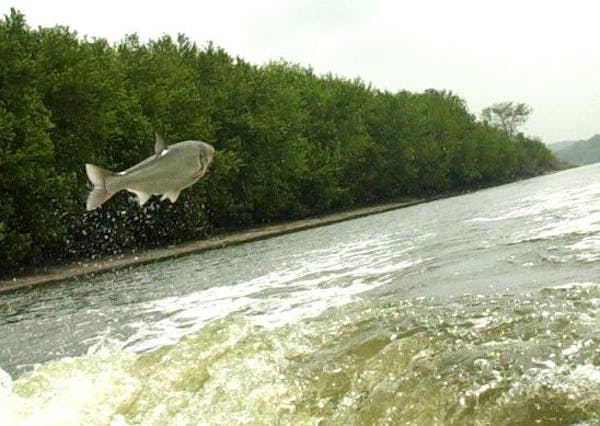Counterpoint
There is no question the Mississippi River is vitally important to our region. It is the backbone of our watershed, and it faces a serious threat from invasive species like Asian carp. Unfortunately the growing urgency that is driving the search for a "solution" is leading to steps that would do more harm than good and would cost our region more than what we may gain.
Closing the lock at Upper St. Anthony Falls would do more than just inconvenience a few businesses, as the Star Tribune Editorial Board suggests ("Close the lock, stop the carp," Oct. 9). The impact would be far more significant -- the river supports approximately 1.6 million jobs and $284 billion in annual economic activity nationally. Shutting down the lock would immediately eliminate 127 jobs and result in an annual loss of more than $40 million in wages and economic output.
It would also lead to increased cost of several important products that pass through the lock, including: fertilizers for Minnesota farmers, cement and aggregate for road builders, and winter road salt for municipalities that already are dealing with budget challenges.
The bill before Congress to close the lock at Upper St. Anthony Falls is certainly not "projobs." It would affect a massive part of our region's economy at a time when we are working hard to keep and attract every job we can.
While the Star Tribune questions why more members of Minnesota's congressional delegation haven't endorsed lock closure, the more important question is why any member of Congress would endorse a knee-jerk plan that doesn't solve the problem and in the process would cause an immediate negative ripple throughout Minnesota's already shaky economy.
This "solution" would also put additional strain on city streets and neighborhoods in Minneapolis and would increase congestion on the metro-area freeway system. The Mississippi River is a working river. More than 10.6 million tons of freight -- which equal more than 425,000 semi-trailer truck loads -- were moved to and from Minnesota via the river last year. If the St. Anthony Falls lock were to be closed, an additional 312 semis would transport materials on Interstate 94 between St. Paul and Minneapolis each weekday, a 36 percent increase in truck traffic. Adding thousands of trucks to our road system would increase maintenance costs for cities and counties without generating any additional new revenue to pay for it.
Much like everyone else, the Upper Mississippi Waterway Association is concerned about the spread of invasive species. However, closing the lock at Upper St. Anthony Falls does not guarantee that Asian carp will stay out of northern rivers and lakes. There are ways to slow the spread of Asian carp without sacrificing the jobs and economic activity connected to river transportation.
The Coon Rapids Dam, 12 miles upstream from Upper St. Anthony Falls, could be employed as the upstream-most barrier to defend against Asian carp. An improved dam structure, coupled with a modified upstream pool-level operating procedure, would serve as an effective barrier approximately 99.9 percent of the time, according to the Minnesota Department of Natural Resources.
Dam 19 in Keokuk, Iowa, 490 miles downriver from Minneapolis, also has been deemed an effective barrier. No "repopulating" carp were confirmed above the dam, whereas large numbers of carp have been found downriver from the dam. Both the Coon Rapids Dam and Dam 19 would protect the Mississippi River's ecosystem without damaging the river economy.
We agree that closing the St. Anthony Falls lock isn't a panacea. But it is also nowhere near the most effective weapon available against Asian carp. Before we make any transformational decisions, Minnesota needs to look at all the data and fully understand the total impact of our decisions. Minnesota's economy cannot afford this kind of mistake.
------------------------
Al Christopherson is chair of the Upper Mississippi Waterway Association board of directors.
The 'Civility Caucus'

Sports betting push at Legislature resorts to punitive leverage


